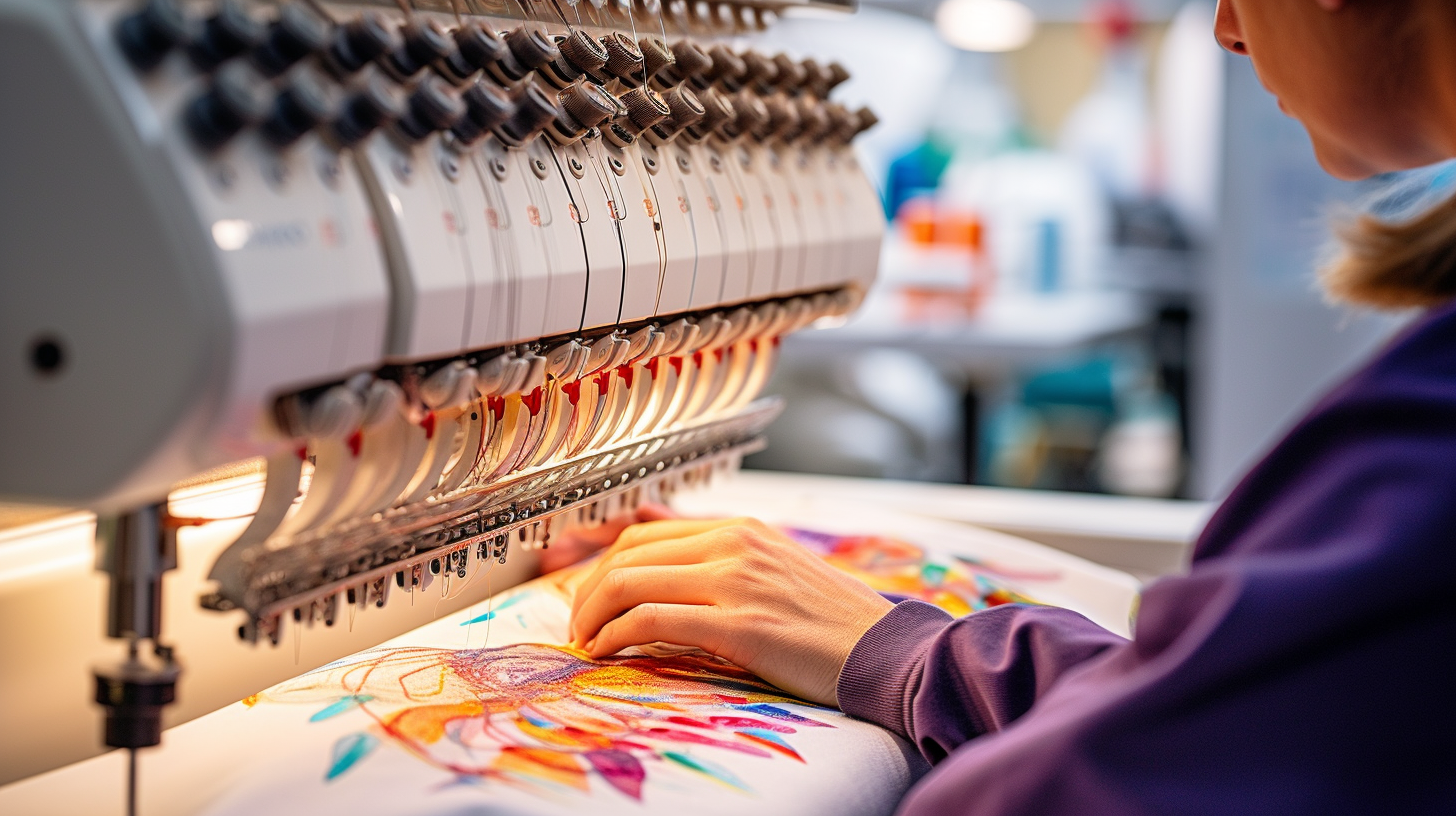Efficient Digitizing for Embroidery: Quick Turn-around
Efficient Digitizing for Embroidery: Quick Turn-around
Blog Article
Mastering the Embroidery Digitizing Refine: Your Ultimate Overview
Embroidery digitizing is a meticulous craft that requires precision and proficiency to translate elaborate designs right into electronic styles for maker embroidery. As craftsmens start this trip to master the needlework digitizing process, a detailed understanding of the fundamentals sets the foundation for excellence. However, beyond the simple expertise exists a realm of advanced software application, specialized devices, and nuanced techniques waiting to be explored. By delving into the nuances of digitizing, one can unlock a globe of imaginative opportunities and raise their needlework projects to brand-new heights.

Recognizing Embroidery Digitizing Basics
Needlework digitizing essentials create the structure upon which elaborate designs are translated right into machine-readable layouts for specific stitching. This initial action in the embroidery digitizing process is essential for guaranteeing that the last embroidered item is a loyal depiction of the original design. Understanding needlework digitizing fundamentals involves grasping crucial principles such as stitch kinds, sew instructions, thickness, underlay, and draw payment.
Stitch kinds play an essential role in determining the visual and textural result of the stitched design. By selecting the suitable stitch type, whether it be satin, fill, or running stitch, digitizers can attain the desired impact and improve the general high quality of the embroidery. Additionally, stitch direction affects the circulation and measurement of the design, while density figures out the spacing and insurance coverage of the stitches.
In addition, rug sewing provides security to the layout by protecting the material and avoiding distortion throughout the embroidery procedure. Pull payment is one more essential factor to consider to neutralize the natural tendency of textile to agreement when stitched. Grasping these needlework digitizing essentials is essential for creating professional-quality embroidered items.
Picking the Right Digitizing Software Program
Selecting the ideal digitizing software program is a crucial decision that significantly impacts the efficiency and quality of the needlework digitizing procedure. Digitizing for Embroidery. When choosing the best digitizing software application, it is necessary to consider aspects such as the intricacy of designs you plan to develop, the user-friendliness of the software program, the level of client support offered, and the compatibility with your embroidery device
There are various digitizing software options readily available in the market, varying from basic programs for novices to innovative software for expert digitizers. Some prominent options consist of Wilcom EmbroideryStudio, Hatch Needlework Software, and PulseID. These software use a wide variety of tools and functions to aid you develop detailed styles effortlessly.
Prior to choosing, it is recommended to discover the different software alternatives with free tests or demos to establish which one finest fits your needs. Furthermore, reading evaluations and looking for suggestions from experienced digitizers can offer beneficial understandings into the strengths and weak points of each software program package (Digitizing for Embroidery). By thoroughly examining your requirements and contrasting the features of various digitizing software, you can make an informed selection that boosts your embroidery digitizing workflow
Digitizing Tools and Methods

Optimizing Layout Settings for Needlework
Mastering the complexities of visit our website layout settings is fundamental in attaining optimum cause the needlework digitizing process, structure upon the foundation laid by comprehending digitizing devices and strategies. When maximizing design setups for needlework, it is vital to consider variables such as stitch type, thickness, underlay, pull compensation, and enrollment. Stitch type choice influences the general look of the style, with choices like satin, fill, and running stitches using various textures and results. Density refers to the spacing and density of stitches, affecting the layout's protection and resilience. Proper padding stitching offers stability and avoids fabric distortion, especially for complicated designs or on elastic products. Draw compensation adjusts for fabric stretch throughout sewing, guaranteeing exact style replication. Enrollment setups line up various components of the design precisely, preserving general style stability. By fine-tuning these style setups, embroiderers can enhance the this contact form quality and accuracy of their embroidered creations.

Troubleshooting Common Digitizing Issues
When encountering usual digitizing issues throughout the needlework procedure, it is important to comprehend the source and implement reliable options quickly. One typical issue is stitch thickness issues, where stitches may be too dense, creating the textile to pucker, or too thin, bring about voids in the design. Readjusting the stitch density setups in the digitizing software application can aid fix this problem.
Another constant obstacle is thread breaks throughout the embroidery process. This can occur due to different factors such as wrong stress setups, dull needles, or utilizing low-quality thread. Making certain appropriate upkeep of the needlework maker, consisting of regular needle adjustments and tension adjustments, can lessen the event of thread breaks.
Additionally, layout enrollment errors can lead to misaligned elements within the needlework style. Inspecting the style alignment in the digitizing software and making needed changes before stitching can aid in avoiding this problem. By resolving these common digitizing concerns quickly and effectively, you can ensure a smoother needlework procedure and high-grade finished products.
Conclusion
Finally, mastering the embroidery digitizing procedure needs a strong understanding of the basics, the appropriate option of software application, and expertise of devices and methods. Optimizing layout setups and troubleshooting typical digitizing problems are important steps in making sure premium needlework results. By complying with these actions vigilantly, one can accomplish precision and efficiency in check over here the digitizing procedure.
Report this page